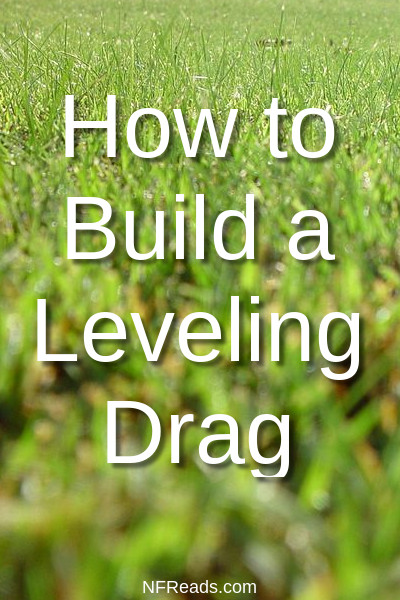
By Donna Dolinar, Wyandotte County Extension Master Gardener since 2006
A leveling drag is a tool to even out a surface like a driveway, parking area, or lawn.
Before we begin, realize that a lawn should not be perfectly flat. There are two important times to have high or low areas in your landscape.
- Swale – A swale is a low area kind of like a gutter for your lawn. It is to allow proper drainage or runoff down to the curb or street
- Positive Drainage – This is the grading around your house or other building. It is higher around the foundation and slopes downward in order to move rain and melted snow away from the structure to prevent water getting into the foundation.
With that in mind, the balance of your yard probably has lumps, bumps and low spots. This is pretty common due to settling of the soil, decaying tree roots, and heavy traffic. As these areas become more pronounced, if the mower is not set properly (for a riding mower that includes correctly inflated tires) those high areas can be scalped. The low areas can end up not very well mowed and can actually become soggy messes.
Some people feel that leveling the area using a lawn roller is a good idea. A lawn roller is a device that is basically a heavy tube that can be pushed or pulled to get a flat surface. There are benefits and detriments to the process, so here are some things to consider:
Advantages
It will smooth out minor bumps and make the lawn more even. This will make it considerably easier to mow without cutting too low or too high or hitting a bad spot and twisting an ankle. It will also give your place a nice, finished appearance. If you have children, it will remove those dips that cause tumbles.
For the low spots or holes, you will need to fill those in first. You can do this by adding soil and/or compost to the area. You might want to consider removing the top layer of grass first and then replacing it. Otherwise, you will need to re-seed or over-seed the spots.
Some folks like to use a light-weight roller to press seeds into the ground to help the seed stay in place and encourage germination. This is not especially necessary since the same result can be achieved if you rake the soil first and the gently cover the seed with a bit more soil.
Fresh laid sod is often rolled to encourage the roots to grasp into the top soil.
Disadvantages
Using a leveler roller will compress the soil; make it tighter. As this happens, all the air pockets are squeezed out. Plants, including grass, absorb oxygen through their roots as well as through the leaves or blades. When you compress the soil, you make it difficult for the roots to find the oxygen and can actually harm the plants. In addition, there will be no spaces for water to go so the roots will not have the ability to drink and take in nutrients. That also means the water, including rain, will just wash away.
Rolling in the spring will create a tremendous amount of stress on the plants, just when they need all the energy possible to start regrowth.
If you are thinking of a golf course and its lovely putting greens, realize that these facilities prepare the area with a special blend of soil and sand designed for the surface. It is specific to creating a managed turf for the golf ball to roll smoothly. Greenskeepers also regularly aerate the greens so that the grass will breathe and absorb the water and feedings.
If you are still considering using a leveling drag, you can certainly make your own. A drag mat can be made from leftover chainlink fencing, a bedspring, railroad ties, or wooden pallets – they work just as well as fancy custom-built ones (welded or otherwise). The key points are:
- The mat will need to be weighted down to offer enough pressure to actually compress the soil
- The front of the mat should be curved upwards or lifted slightly above the ground (e.g. by making the attaching rope short) otherwise it will dig into the ground and pile dirt in front of it, possibly enough to stop a mower or tractor
Overall it will be a heavy and time consuming task, especially if you pull it by hand. And even after managing to cover every inch of lawn with their homemade contraption, some aren’t happy with the results and end up hiring professionals.
Best wishes on a healthy and good looking lawn.